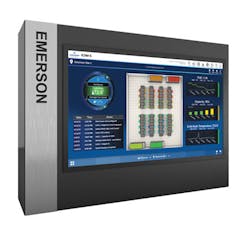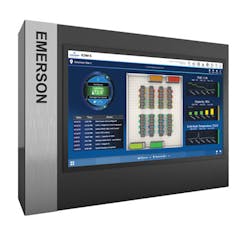The emergence of SDN: Understanding the critical infrastructure challenge of next-generation networks
By Jeremy Clute, Vertiv
For decades, information technology (IT) and telecommunications networks were decidedly different things, but times are changing. Today’s communications networks increasingly rely on IT systems, with data centers replacing traditional central offices. And many of today’s data centers are serving as hubs of vast computing networks, not unlike the traditional telco core/access architecture. The lines aren’t just blurred; they’re shared.
In both cases, these are sprawling, multi-layered networks of computing and communications technologies supported by increasingly intelligent critical infrastructure systems. The intelligence presents tremendous opportunity for more-efficient, more-reliable network operation, but realizing those opportunities can be a challenge. Monitoring and management of these diversified networks is key, but it can be difficult and it only scratches the surface of what’s possible with these technologies.
Software-defined networking (SDN) has the capability to fundamentally change our approach to today’s emerging next-generation networks. SDN separates network services and loads from dedicated hardware and servers, enabling a dynamic, virtualized network that runs on commercial-off-the-shelf hardware. These software-centric virtualized networks are becoming more common around the world, increasing network agility, reducing costs and time to market, and even generating new revenue streams.
The first step is automating manual processes to more-effectively collect and analyze data from devices across the network - including critical infrastructure systems - and scaling accordingly to meet demand. Ultimately, that’s the key to SDN. When activated, a truly software-defined network can shift loads seamlessly, in real time, across devices and locations. Distinctions like core and access mean little, and downtime is virtually eliminated as equipment failures are mitigated by simply moving the load and managing capacity across the network. This is a seismic shift in network design and operation, transforming traditional, static networks into dynamic organizational assets that navigate load fluctuations by elegantly leveraging distributed, but no longer isolated, resources.
Of course, it’s not quite that simple. A software-defined network requires a critical infrastructure that’s just as agile, just as flexible and just as dynamic as the technologies and software underpinning the network. SDN is only possible if the power and cooling infrastructure is capable of supporting that load. Just because specified servers have the capacity to handle the incoming load doesn’t necessarily mean the power and cooling infrastructure supporting those servers can handle it. The servers, infrastructure, switches and storage must work in concert. Otherwise, automated load management can have unintended and severe consequences. Executed properly, it’s easy to see applications of SDN that not only react to load fluctuations, but also variables like current energy costs and external environmental conditions, which could potentially influence decisions on when and where to shift loads.
All of this requires real-time visibility into servers, switches, storage systems and power-and-cooling infrastructure and the capability to manage those systems while collecting and analyzing data from across the network. The key word there is “analyzing.” This goes far beyond data collection. Today’s equipment supplies a wealth of data - arguably too much - but the problem is converting the data into something informative and actionable. That can be handled through a data collection layer - made up of management gateways and intelligent system controllers that funnel data from multiple devices - that can consolidate and analyze data and deliver it to a management system in a format it can use.
Those gateways and controllers provide intelligent system-level management - optimizing the performance of those systems - while also enabling SDN. Think about data center thermal management, which can leverage a system of sensors and controls to more-accurately cool certain racks or rows as necessary. Effective thermal management can reduce cooling costs by as much as 30 percent - a significant savings when you consider data center thermal management can account for anywhere from 15 to 40 percent of data center energy costs.
That sort of network intelligence enables increased automation and even predictive capabilities, ensuring optimized performance - including reduced energy consumption and improved overall operating efficiency. Fully realized SDN can significantly reduce operational expenses. The increased intelligence inherent in a software-defined network makes maintenance calls more efficient and triggers timely proactive service calls.
We are moving closer to widescale adoption of SDN, and organizations must prepare for the evolution.
Jeremy Clute is director of product management, software for Vertiv (www.vertivco.com). Formerly known as Emerson Network Power, Vertiv designs, builds and services critical infrastructure that enables vital applications for data centers, communication network and commercial and industrial facilities.
SDN ramp-up slower than anticipated
In this article Jeremy Clute emphasizes the importance and benefits of preparing for the software-defined network (SDN) by building “a critical infrastructure that’s just as agile, just as flexible and just as dynamic as the technologies and software underpinning the network.”
According to a research note published in January by Clifford Grossner, IHS Markit’s senior research director for data center, cloud and SDN, many data center operators still have the opportunity to build that type of critical infrastructure. That’s because, according to the firm’s 2016 survey of service providers, within data centers lab trials for SDN are still dominant over production trials and live deployments. “Two-thirds of the service providers participating in our 2016 survey are still conducting lab trials of data center SDN,” Grossner said. “Getting to live production is taking more time than expected,” he continued. “This means that the most innovation-driven part of the market critical for new revenue, SDN controllers, data center orchestration and SDN applications, is still wide open.” - Patrick McLaughlin

